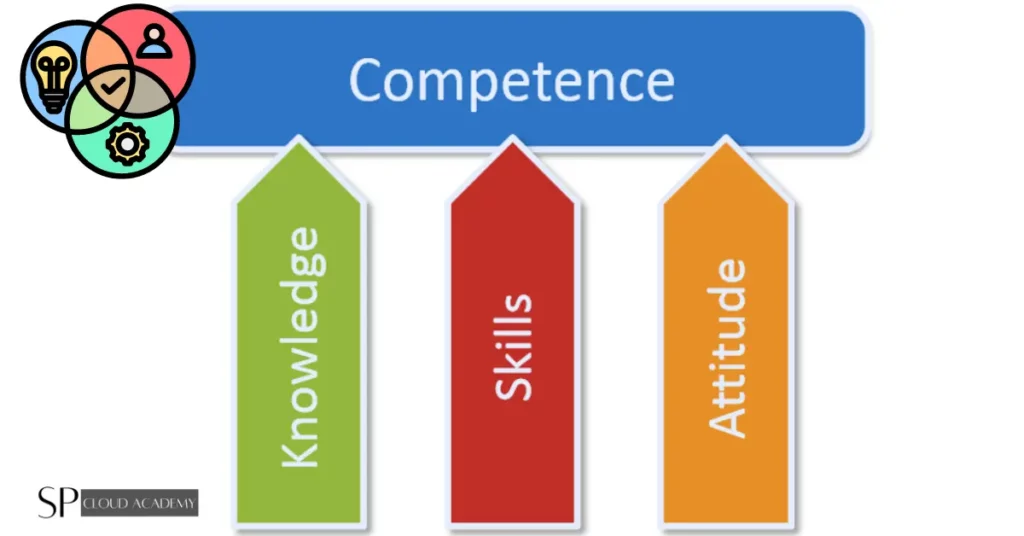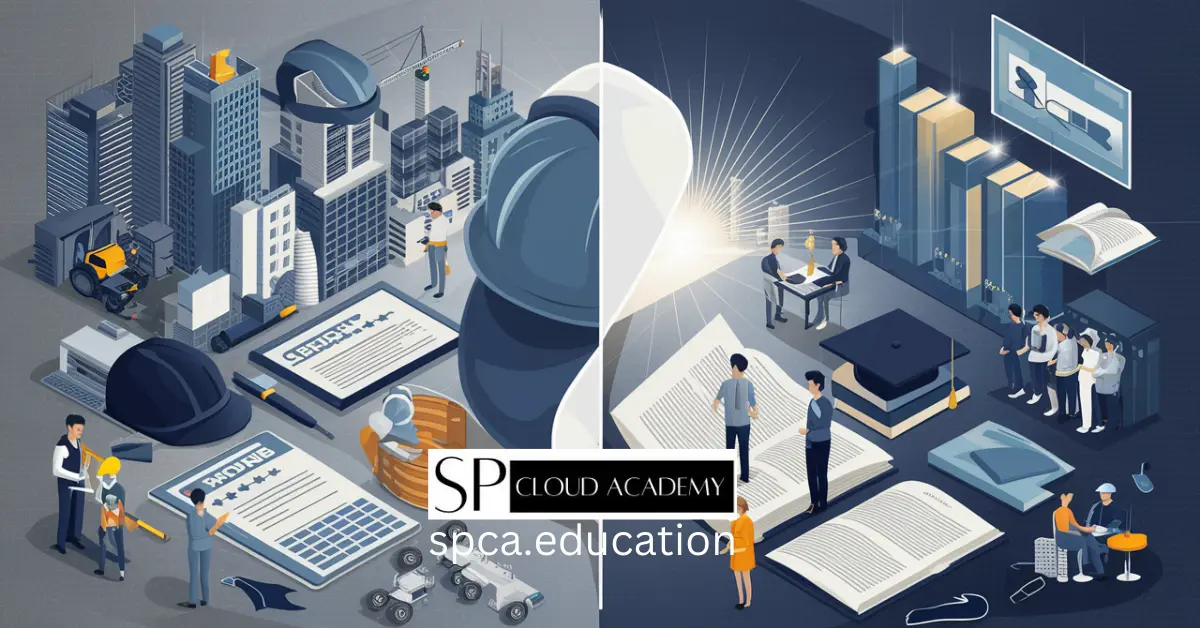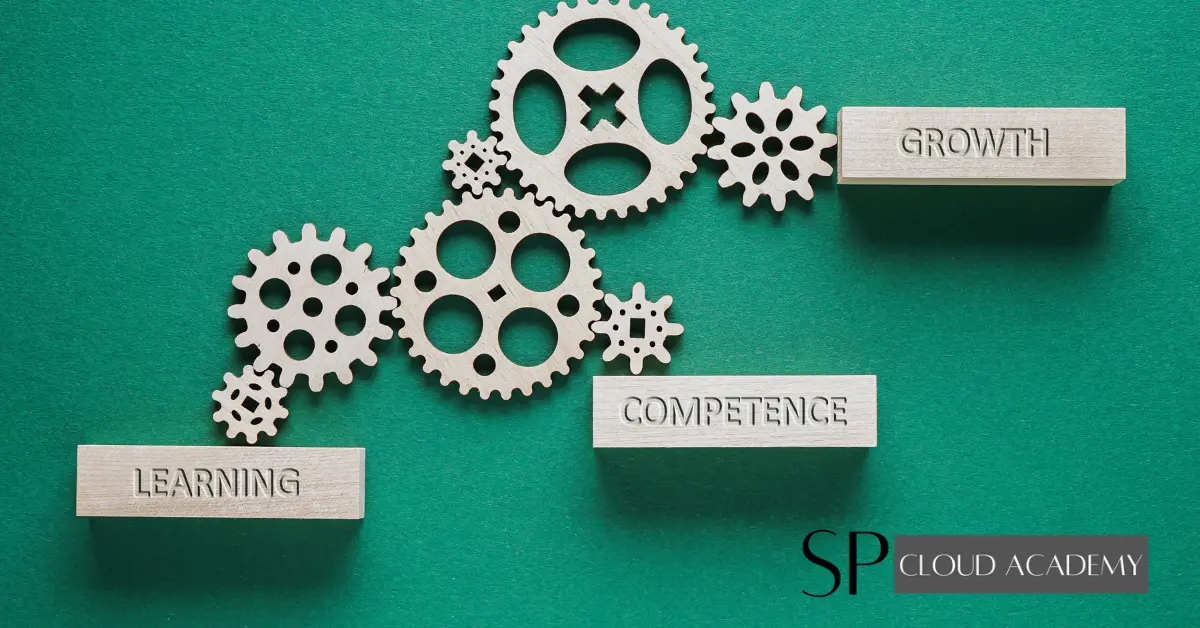Competency-Based Training and Assessment (CBT&A) is an educational and assessment approach that focuses on measuring an individual’s abilities, skills, and knowledge against specific predefined competencies or performance standards. This method is commonly used in vocational education, workforce development, and training programs to ensure that learners are equipped with the skills and knowledge needed to perform specific job roles or tasks effectively.

“Competency-based training and assessment focus on what a person can do, not just what they know. It’s about real-world skills and performance, not just theoretical knowledge.”
Here are some key principles and features of CBT&A:
- Competency-Based Education (CBE): CBT&A begins with the identification of the key competencies required for a particular job or role. These competencies are defined in terms of specific, observable behaviors or tasks that individuals must be able to perform.
- Clear Learning Objectives: Training programs using CBT&A typically have well-defined and clear learning objectives that align with the identified competencies. These objectives serve as a roadmap for learners and instructors.
- Assessment of Competencies: Instead of traditional methods like grades or examinations, CBT&A relies on ongoing and authentic assessments that directly measure a learner’s ability to demonstrate the required competencies. These assessments can take various forms, including practical demonstrations, simulations, performance evaluations, and portfolios.
- Self-Paced Learning: CBT&A often allows learners to progress at their own pace. They can advance to the next competency or module once they have demonstrated proficiency in the current one. This flexibility is especially valuable for adult learners and those in workforce development programs.
- Feedback and Remediation: Learners receive constructive feedback on their performance, helping them identify areas where improvement is needed. Remediation or additional training is provided as necessary to address skill gaps.
- Industry-Relevance: CBT&A is often designed in close collaboration with industry stakeholders to ensure that the competencies taught align with current job requirements and industry standards.
- Portfolios and Records: Learners typically maintain portfolios or records of their accomplishments and competencies acquired throughout the training program. These can be valuable for job applications and career advancement.
- Certification: Successful completion of a CBT&A program often leads to the awarding of certificates or credentials that are recognized by employers and industry associations.
- Flexibility and Customization: CBT&A programs can be customized to meet the specific needs of different learners or industries. This adaptability allows for more targeted and efficient training.
- Continuous Improvement: CBT&A programs are often subject to regular evaluation and revision to ensure they remain up-to-date and effective in meeting industry demands.
CBT&A is widely regarded as an effective approach for workforce development and skills training because it focuses on practical, job-specific skills and provides learners with a clear pathway to acquiring the competencies needed to succeed in their chosen careers.
Importance of Competency Based Training and Assessment in Engineering Curriculum
Competency-Based Training and Assessment (CBT&A) plays a significant role in engineering curricula for several important reasons:
Real-World Relevance: Engineering is an applied field where practical skills and problem-solving abilities are paramount. CBT&A focuses on real-world competencies, ensuring that engineering graduates are not just knowledgeable but also capable of applying their knowledge to solve complex engineering challenges.
Alignment with Industry Needs: CBT&A allows engineering programs to stay current with industry requirements. By continually updating competencies to match evolving engineering practices and technologies, educational institutions can produce graduates who are in high demand by employers.
Job Readiness: Engineering graduates are expected to be job-ready from day one. CBT&A ensures that students acquire the specific skills and knowledge relevant to their chosen engineering discipline, making them immediately valuable to employers.
Customization: CBT&A provides flexibility for engineering programs to tailor their curricula to meet the specific needs of students and the demands of different engineering fields. This customization helps students focus on their areas of interest and career aspirations.
Assessment of Critical Skills: Engineering involves a wide range of skills, from problem-solving and critical thinking to technical proficiency. CBT&A allows for the comprehensive assessment of these skills, ensuring that graduates possess a well-rounded skill set.
Reduced Skills Gap: By closely aligning education with industry expectations, CBT&A helps bridge the skills gap that often exists between academic knowledge and practical application in engineering. This benefits both graduates and employers.
Accurate Measurement of Competence: Traditional education often relies heavily on grades and standardized tests. CBT&A, on the other hand, measures competence directly through practical assessments, providing a more accurate reflection of a student’s abilities.
Lifelong Learning: Engineering is a dynamic field with evolving technologies and methodologies. CBT&A instills a culture of lifelong learning by encouraging engineers to continuously update and expand their competencies throughout their careers.
Quality Assurance: CBT&A often includes rigorous quality assurance processes to ensure that graduates meet defined standards and competencies. This leads to consistent educational outcomes and enhanced program accountability.
Global Competitiveness: As engineering is a global profession, graduates must be competitive on a global scale. CBT&A helps institutions produce graduates who can compete effectively in the international job market.
Innovation and Problem-Solving: CBT&A encourages students to develop innovative problem-solving skills, which are essential in engineering to tackle new challenges and contribute to technological advancements.
Student-Centered Learning: CBT&A empowers students to take ownership of their learning, set goals, and track their progress. This approach fosters a sense of responsibility and self-motivation among engineering students.
Incorporating Competency-Based Training and Assessment into engineering curricula helps institutions produce graduates who are not only academically prepared but also possess the practical skills, adaptability, and industry-specific knowledge required to excel in the engineering profession. It ensures that engineering education remains relevant and responsive to the evolving needs of the engineering field and society as a whole.
FAQs
Here are some frequently asked questions (FAQs) related to Competency-Based Training and Assessment:
What is Competency-Based Training and Assessment (CBT&A)?
- CBT&A is an educational approach that focuses on measuring and developing a person’s skills and abilities in a specific field or job role. It emphasizes practical skills and performance over traditional academic knowledge.
How does CBT&A differ from traditional education?
- In traditional education, the emphasis is often on completing a certain number of courses or accumulating credits. CBT&A, on the other hand, centers on demonstrating specific competencies or skills required for a job or task.
What are the key components of CBT&A?
- Key components of CBT&A include clearly defined competencies, learning outcomes, assessments aligned with competencies, and the flexibility for learners to progress at their own pace.
How are competencies defined in CBT&A?
- Competencies are typically defined through collaboration between educators, industry experts, and employers. They describe the skills, knowledge, and behaviors required to perform a specific job or task effectively.
What types of assessments are used in CBT&A?
- Assessments in CBT&A can vary but often include practical exams, demonstrations, projects, and performance evaluations. These assessments directly measure a person’s ability to apply their skills.
Is CBT&A only suitable for vocational training and trades?
- While CBT&A is commonly associated with vocational training, it can be applied to various fields and levels of education. It’s a flexible approach that can be adapted to different learning contexts.
How do learners progress in CBT&A programs?
- Learners in CBT&A programs progress as they demonstrate competence in specific skills or tasks. There are often no fixed timelines, allowing individuals to advance at their own pace.
What are the advantages of CBT&A for learners?
- Learners benefit from CBT&A by gaining practical, job-ready skills, increased motivation and engagement, and the ability to focus on areas where they need improvement.
How do employers benefit from employees trained through CBT&A?
- Employers benefit from CBT&A as it ensures that employees have the specific skills required for their roles, leading to increased productivity, reduced training costs, and improved job performance.
Can traditional education institutions incorporate CBT&A into their programs?
- Yes, many traditional educational institutions have started to integrate competency-based elements into their programs to better prepare students for the workforce.
Is CBT&A suitable for online or remote learning?
- Yes, CBT&A can be adapted for online or remote learning, making it a versatile approach that can accommodate various learning environments.
How is competency-based education assessed and accredited?
- Accreditation bodies and institutions often work together to ensure that competency-based education programs meet certain standards and quality criteria. Assessment methods and outcomes are rigorously evaluated.
These FAQs provide an overview of Competency-Based Training and Assessment and address common questions regarding its principles, benefits, and applications in education and the workforce.
See Also
Blended Learning Archives – SP Cloud Academy (spca.education)
-

Revolutionizing Classrooms: How Project-Based Learning Transforms ICT and Engineering Education
-

Industry-Recognized Skills vs. Academic Knowledge: Which Will Get You Ahead?
-

Educational pathways for success: Explore training, vocational, technical, and professional education to achieve your career goals effectively.
